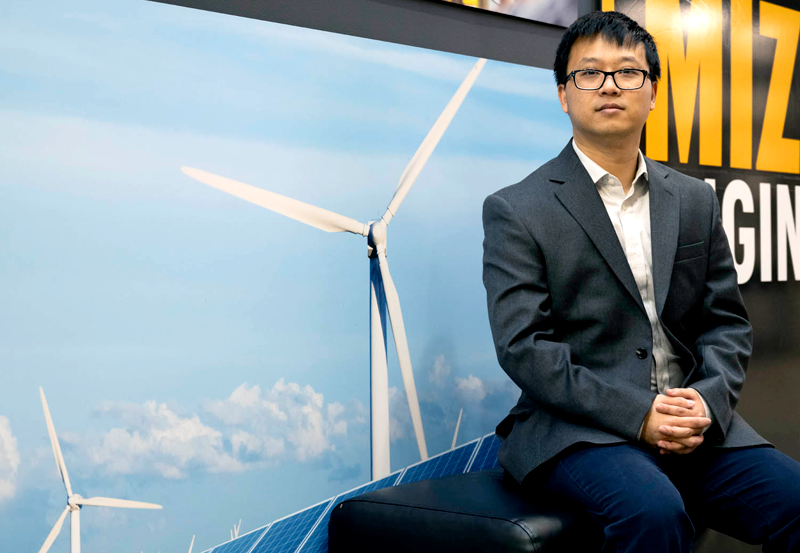
As more homes, industries, and power grid systems utilize solar and other renewable energy, and more vehicle owners switch to electric vehicles (EVs), the need for power converters is on the rise. But right now, they’re still expensive and not as efficient and compact as they could be.
Qingyun Huang is working to change that. An assistant professor in electrical engineering and computer science, he’s excited to help usher in a new generation of power electronics that are efficient, compact, affordable, and reliable.
“Electrical energy from power grid, solar panels, wind turbines or batteries — no matter what kind of energy source you have, it needs power electronics to convert and deliver,” Huang said. “In the past, power electronics has been behind the scenes, but now because of renewable energy, because of electric vehicles and storage systems, and because of the grid modernization, power electronic scientists and engineers are coming to the stage. There are a lot of exciting research and job opportunities in power electronics.”
Huang is studying various ways to improve the efficiency, density, cost and reliability of various kinds of power electronics converters, including solar inverters, datacenter power supplies, EV traction inverters and EV chargers.
One method includes designing more compact power converters using Gallium. Nitride (GaN) or Silicon Carbide (SiC) power semiconductors instead of traditional Silicon power semiconductors. GaN and SiC are semiconductor materials with wide bandgap (WBG), making them suitable for high-power and high-frequency power electronics applications. Another major innovation is how to improve the power electronics converter topology and control to achieve the efficiency, density, cost and reliability targets. Innovations on power electronics converter topology and control can have profound impact on the performance.
“We want to make electric power energy processing more efficient and compact, but another concern is how to make renewable energy systems more affordable,” Huang said. “In residential solar rooftop systems, for every dollar you spend on solar panels, you have to spend around another half dollar for solar inverters1. We can make renewable energy systems more adaptable and affordable if we can improve the efficiency and reduce the cost of solar inverters.”
Huang’s team also works on traction inverters, which are critical components in electric vehicles. The traction inverter is comparable to the engines of traditional internal combustion engine cars.
“There’s a huge market need and a huge research need in this area,” he said. “What our research focuses on is how to improve the efficiency and reduce the size to increase the power density of tractor inverters to make them smaller, lighter and more affordable.”
Because of increasing demand and opportunities, Huang and collaborators are working to strengthen energy and power research areas in the Department of Electrical Engineering and Computer Science.
This spring, Huang — along with Jim Fischer, an associate teaching professor — are opening an upgraded, fully equipped teaching lab in Naka Hall where students can work with state-of-the-art power electronics testing equipment.
Huang, who joined Mizzou Engineering in 2022, is currently recruiting students who are interested in power electronics research. He’s also looking forward to cross-campus collaboration when the new Center for Energy Innovation opens in late 2026.
References:
[1] V. Ramasamy, Et al., National Renewable Energy Laboratory, Clean Kilowatts, LLC, U.S. Department of Energy Solar Energy Technologies Office, “U.S. Solar Photovoltaic System and Energy Storage Cost Benchmarks, With Minimum Sustainable Price Analysis: Q1 2022.”